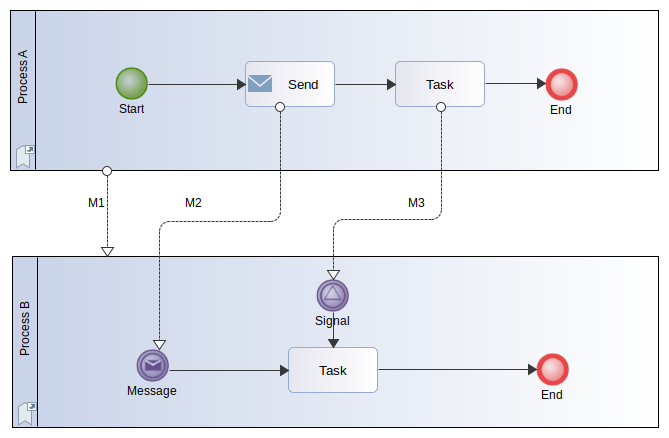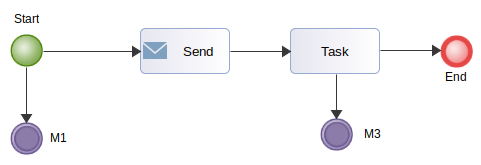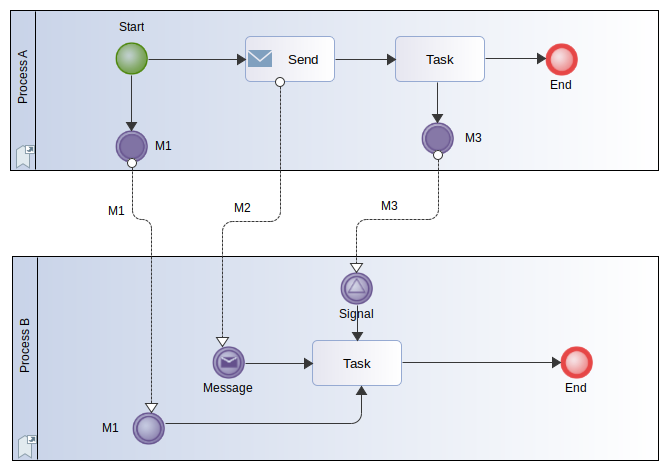Summary
A MessageFlow should start from a SendTask/ThrowEvent/ "external" Participant and end on a ReceiveTask/CatchEvent/ "external" Participant.
Details
The idea behind this recommendation is that the user reading the model should always be able to understand how a process interacts (or not) with other processes (message flows).
While things are clear in a Collaboration Diagram where message flows are directly displayed, they are less obvious when considering a Process Diagram, where message flows do not appear. When looking at a Process diagram the user has no clue about the interactions occurring with other processes. The BPMN norm just does not provide such clues. In order to improve process diagrams readability and usability, the R3320 rule, as a tip, recommends to introduce Throw/Catch events nodes in the processes involved in a collaboration in some circumstances.
The recommended way to represent messages between Processes is either to:
-
Start from a ThrowEvent or from a External Participant and end on either a CatchEvent, a ReceiveTask or an External Participant.
-
Start from a SendTask or from a External Participant and end on either a ReceiveTask or an External Participant.
Obviously, so called "external" Participants, that represent processes for which no internal details (Tasks) are known, remain allowed as source or target of a MessageFlow.
Tips
If you have flows binding other kind of elements, you should consider updating your model to use these elements instead.
Let’s discuss a simple example and how to fix it.
Example
The initial Collaboration diagram
The image below shows a collaboration diagram between two processes A and B where the three message flows M1, M2, M3 are perfectly conform to the BPMN norm.

The initial Process diagram of Process A
When looking at the diagram of Process A the user can only see the following image:

The difficulty here is that the user has no clue about the fact that process A is currently interacting with another process, this can be a problem.
In our example, the R3320 audit rule will complain about M1 and M3 message flows and will not report anything about M2 as the user can infer from the nature of the "Send" SendTask that "something" is actually sent.
For the M1 and M3 message flows, which are sourced from the "Process A" Participant and the "task" Task in the collaboration diagram, the rule will recommend to fix the model.
Fixing the example model for M1 and M3
The fix consists in inserting Throw/Catch paired events in process A and process B and using them as source/target for the M1 and M3 message flows. The images below show the fixed diagrams.
Fixed Process A diagram

Fixed Collaboration diagram

Conclusion: The main benefit of the fix is that the Process A process diagram alone can now be fully understood as the M1 and M3 message flows sources appear in it, indicating that some event is propagated outside of Process A. The user reading the model is therefore invited to consider the Collaboration diagram where M1 and M3 appear explicitly.